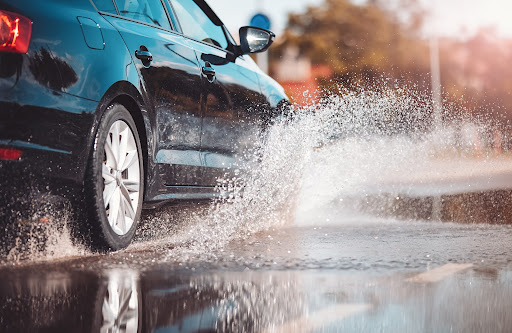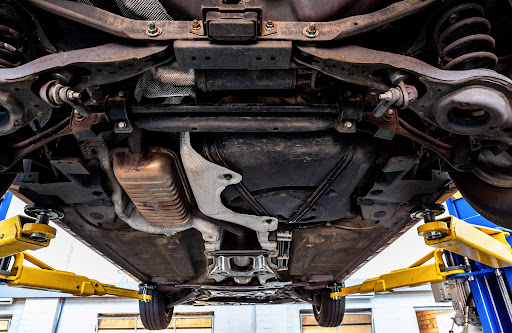
Driving through puddles is something that most drivers have done at least once in their lives. There are even drivers who intentionally seek out puddles. This type of behavior, though, may result in unsavory consequences.
Most people know to avoid obvious hazards on the road. While puddles seem harmless, they can also present certain risks. Here are the top reasons why drivers should refrain from driving through puddles.
Puddles can be very deceptive at first glance. They might look shallow, but there’s no telling how deep they can get unless you’re familiar with the area. Deep puddles tend to form when there are deep or large potholes, and driving through potholes can be bad for your vehicle. When you drive through deep puddles, water can find its way into your car.
Hydrolocking happens when water enters the cylinders of a car, causing the engine to seize. Hitting a puddle at high speed can result in a hydrolock, as air and water are forced into the engine. Believe it or not, it only takes a small amount of water to seize the engine. Even driving through 6 inches of water can cause this.
When the engine seizes, the vehicle may not start. Apart from hydrolocking, this can also occur due to wet spark plugs or an electrical short in the ignition.
Driving through puddles might not seem like a big deal, but you never know what’s hiding underneath the water. Puddles typically form when there is a dent or cavity on the road. Water can also gather on top of severely damaged pavement. Worse yet, there may be a sinkhole waiting below.
Potholes can cause plenty of damage to vehicles. In 2021 alone, drivers collectively spent around $26.5 billion on vehicle repairs from potholes.
When water gets into the engine component, there is a chance that it might contaminate the car’s fluids. The water might mix with the engine oil, the differential fluid, and the transmission oil. When that happens, it can mess with lubrication, causing excess friction and heat. This, in turn, can lead to premature component damage.
You may wonder, “I drove through a deep puddle, and my car won’t start.” This can be due to several things, and one of them is electronic damage.
Computers control most modern cars and come with electronic functions. When you drive through a puddle, water can enter the electrical wiring and mess with the electronics. It will take quite some time and a lot of money to repair those parts.

Water and metal just don’t go well together. When you drive through puddles, you’re exposing your vehicle to water, which can cause the unprotected components to rust. More often than not, drivers fail to realize that these components have rusted until it’s far too late.
Flood water is not only a detriment to your vehicle but is also extremely dirty. Apart from rainwater, puddles can also consist of sewage and street pollutants. When you drive over a deep puddle, it can cause flood water to enter your car. Due to poor ventilation, bacteria and mold can soon grow inside your vehicle, resulting in a foul odor and poor air quality.
It is best not to drive over puddles, no matter how shallow or deep they appear. After all, it is not always possible to gauge the depth of a puddle with the naked eye.
That being said, avoiding driving through puddles at least 6 inches deep is a good idea. Bigger cars like SUVs and trucks tend to get away with driving over puddles. If you have a small car or are unfamiliar with the area, try to stay away from pools of water on the road.
Try as you may, there are going to be times when you inadvertently drive over puddles. Perhaps you weren’t paying attention to the road or severely underestimated the depth of a shallow-looking puddle. Sometimes, your judgment simply gets the better of you. Whatever the case, all drivers should know how to proceed from now on.
Here’s what you should do immediately after driving through a deep puddle.
While you can do some of these yourself, taking your car to a mechanic after driving through puddles is always good. A mechanic is better suited to inspect your vehicle for any signs of damage and can recommend proper action.
Driving through puddles poses serious risks to your vehicle. As such, the next time you encounter a puddle, think twice before charging through it. Instead, try your best to avoid puddles without endangering yourself and those around you when you’re on the road.
RELATED ARTICLES: